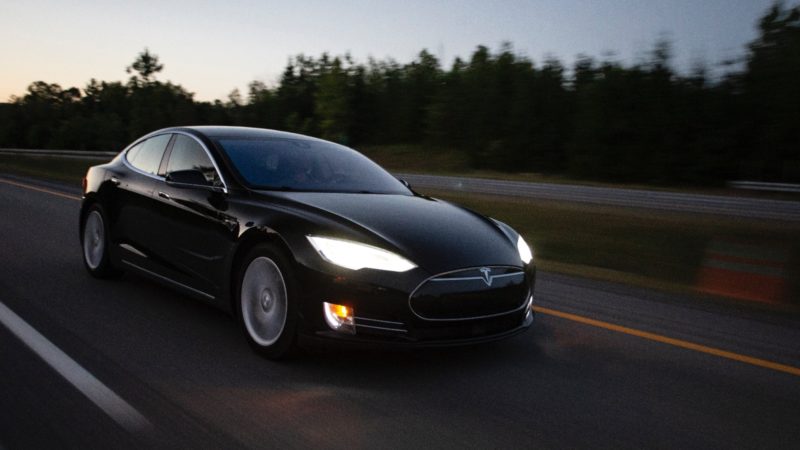
Anna Turley’s recent LabourList article about automation rightly extols the virtues of new technology while warning of its potential to cause “mass misery as well as glittering prizes”. There is a tendency to think technology is able to solve all problems, even when a cursory examination of the issue suggests otherwise – and nowhere is this more true than in relation to driverless cars.
Shaun Bailey, the Tory candidate for London mayor, has fallen hook, line, and sinker into the autonomous car trap, promising driverless buses that will reduce the power of unions. Well, he can dream on. Like so many others, Bailey has been blinded by the hype surrounding autonomous (driverless) cars, and hopefully will pay a political price for his naivety.
Labour MPs and shadow ministers must not make the same mistake. Already, I’ve heard senior Labour figures talk seriously about the advent of driverless vehicles and the impact they could have. There is a real risk that transport policy will start being shaped around the expectation that we’ll soon be sharing the roads with vehicles that do not require a driver. Indeed, Philip Hammond has predicted that this will take place by 2021 and we should be prepared.
I have spent a significant part of the past three or so years analysing what is happening in relation to driverless cars and I am convinced that, although tech and car companies have committed some $80bn – yes, billion – for R&D into this technology, it is highly improbable that anything like the model they are putting forward will ever materialise. Reading the literature in recent months suggests that many other analysts, commentators and people within the industry agree. Driverless cars may well be a pipe dream. Instead, there will increasingly be ‘driver aids’ to make motoring easier and supposedly safer, though ultimately such aids may have precisely the opposite effect by de-skilling drivers.
There is an element of creeping panic among the car manufacturers and tech companies that have devoted so much money to this holy grail. The death of a woman wheeling her bicycle in Arizona at the hands of a ‘driverless’ Uber test vehicle earlier this year not only stopped that company from developing its programme, but sent a shockwave through the whole industry.
Yet the government seems poised to ignore all the risks of having driverless cars on our roads and proceed with this experiment, regardless of the safety consequences. Essentially, Tory ministers are trying to create a climate in which the British public is expected to accept the presence of these vehicles on our road without questioning their safety or indeed knowing the regulatory framework under which they are operating. The recently passed Connected and Autonomous Vehicle Act contained a few measures relating to insurance but did nothing to address the fundamental issues related to these cars.
One example is definition. What does autonomy mean? The insurance industry is increasingly worried about this issue as the automobile manufacturers are so eager to get on the bandwagon that they are portraying vehicles as ‘driverless’ even when they’re not. There are fears that people will increasingly think their cars can operate safely without intervention when that may not be the case.
This was brought home to me when I was invited to a test site in Upper Heyford. It was very noticeable that the various vehicles have very different forms of driver assistance, with some recognising dangers and risks that others ignore. The most obvious failing was the Nissan Leaf, which “helps you drive rather than takes over”. When in a mode that no longer required the ‘driver’ to control the steering wheel, it smashed right into a target ‘car’ (made to disintegrate safely) used by the testers. Another car managed to stop but only just in time.
The most misleading use of terminology is by Tesla, the troubled American electric car manufacturer. Its founder and chief executive Elon Musk insisted that the Tesla driver aids should be called ‘autopilot’, when in fact the cars still require constant attention from the driver.
Labour must be ready to address these issues. Before driverless vehicles are let on to public roads, they must be made to undergo rigorous testing to ensure their safety. And at first, there should be warnings that these vehicles are being allowed to operate only on certain roads. It may well be that the technology is never sufficiently safe to allow them on roads with other traffic. There are legal, insurance, liability and safety measures to consider before they can share roads with conventional vehicles, as well as enormous technical problems that, even after a decade of investment, are nowhere near solved. The Tories, in their desperation to show themselves as modern and technology-friendly, are playing fast and loose with people’s lives.




More from LabourList
Majority of Labour members oppose government’s anti-migration measures
‘First past the post is corroding trust in politics. The government must make all elections fit for the future’
‘Hope starts young: Why Labour must tell the story of a better tomorrow’